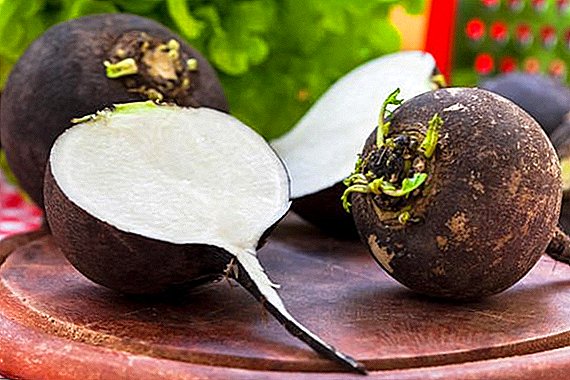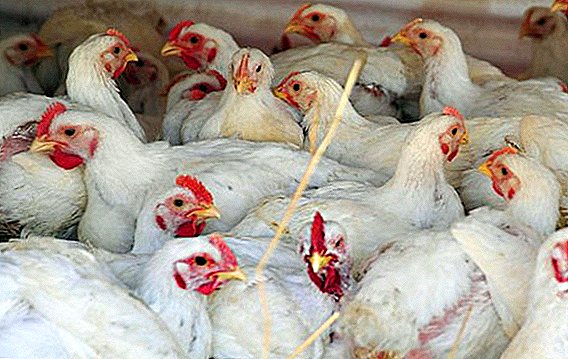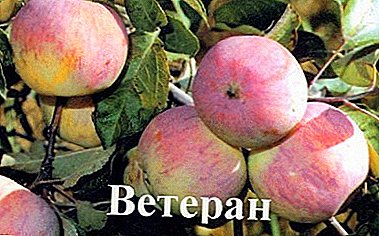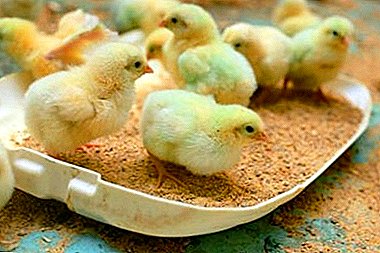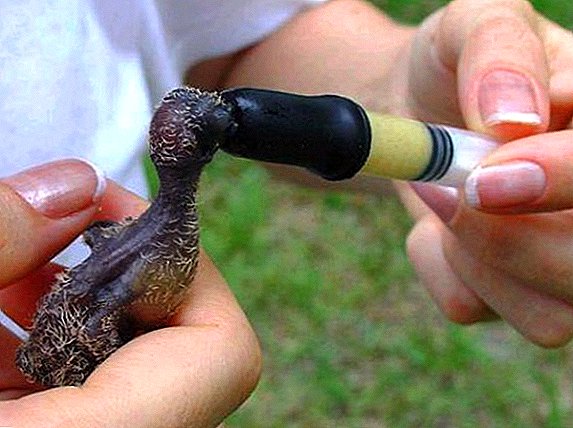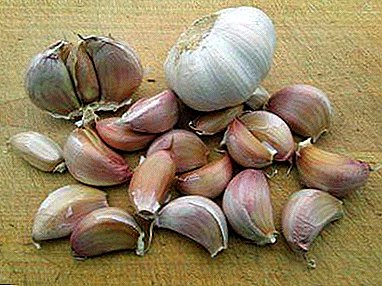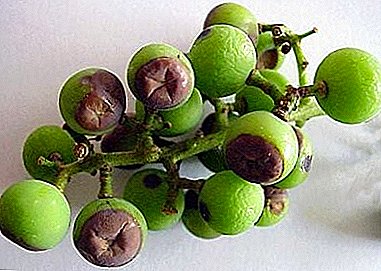
Among the many diseases of grapes are often found various types of rot.
What is it? Why does the grapes rot on the vine, on the berries in the hands? Three types of rot are most common: gray, white and black.
Which varieties may be contaminated and which are not? How to recognize the danger?
Let's try to figure out why they are, how to protect the grapes and what to do if the disease has already appeared.
Signs of disease
 Different types of rot can manifest themselves in different ways. The reasons for their appearance also vary. Gray and black rot can occur after long rains, and white, on the contrary, from a prolonged drought.
Different types of rot can manifest themselves in different ways. The reasons for their appearance also vary. Gray and black rot can occur after long rains, and white, on the contrary, from a prolonged drought.
So, gray and white rot appear only on fully ripe berries. Signs of its manifestation is white, fluffy moldy plaque covering most of the berries. Sometimes an infection can begin with damage to the leaves and shoots.
Black rot begins with the appearance on the leaves of small brownish spots with dark edges. Over time, the disease affects the berries and is a great danger to the crop.
Most rot affects only the berries during ripening. But some types of rot can cause harm to the whole plant.
Kinds of rot
There are several types of grape rot. The most famous of them: white, black and gray.
White
White rot appears as a result of infecting a plant with a certain type of fungus. External signs of the disease can be divided into several stages:
- small yellow spots appear on the berries;
- berries shrink and shrink in size;
- spots become pronounced, berries are covered with mold;
- leaves dry and turn darker.
Rarely spots can be found on grape shoots.
Below are photos of white rot of grapes:


Black
Black rot winters on the vine vine. With the beginning of the active growth of shoots, the leaves and berries are infected.
Approximately 2 weeks after infection, brown spots with a black border appear on the leaves.
With the beginning of flowering such marks may appear on the crests and petioles. In the future, the disease goes to the berries and looks like a dark burned into the inside. Over time, the berries shrivel, turn black, and eventually dry out.
In the photo below you can see how black rot of grapes looks like:



Gray
From gray rot suffers not only grapes, but also other fruit crops. Signs of gray rot:
- appearance on the leaves of small brown spots with a grayish bloom;
- leaves begin to dry out;
- Shoots covered with dirty gray mold;
- affected inflorescences very quickly dry out and die;
- On the berries appear bright purple spots, with time becoming brown.
Gray rot is extremely dangerous for the harvest. Affected berries are not suitable for consumption and processing. The disease very quickly passes to the whole vineyard and can destroy not only the harvest, but also the whole plant.
In the photo below, gray rot on grapes:



Causes of
Why do grapes rot right on the bush?
White rot occurs mainly on shoots and berries. It is caused by a fungus that can safely winter in the bark of shoots and fallen leaves. In the spring, it wakes up and, under certain conditions, it can hit shoots very quickly.
Damaged berries begin to crack, become bitter, then darken, frown, and dry out. Not only individual berries rot - the whole bunch of grapes suffers.
Infection with black rot begins in early spring. The fungus that causes this disease also tolerates winter well and appears primarily on the leaves. In the initial stage, this rot is often confused with mildew. Then there are characteristic black dots, the so-called. pycnidia.
For the shoots and leaves, black rot does not represent a great danger, but with the defeat of clusters, most of the crop may die.
Gray rot can damage the entire plant: shoots, cuttings, grafting sites. Cold and wet weather is ideal conditions for the spread of the disease. Especially dangerous rot for ripe berries.
It occurs when the damage to clusters by hail or by improper watering of the plant. If after a long drought begins heavy rain, the skin of the berries can crack, which is an excellent breeding ground for the fungus.
Contributes to the appearance of rot and damage to the clusters with a leaf-maker or wasp. To avoid contamination, it is necessary to take preventive measures in time and to ensure proper vineyard care.
Methods of struggle
 If the disease still appears, then it is necessary to apply the treatment of the bush and carry out the removal of damaged clusters and shoots.
If the disease still appears, then it is necessary to apply the treatment of the bush and carry out the removal of damaged clusters and shoots.
Gray rot on grapes can be processed below the described folk remedies. First, they destroy all the affected parts of the plant, then sprinkle with a weak solution of green soap or baking soda. For the preparation of soda solution take 70 grams of soda in a bucket of water.
Soap solution should be 1%. The treatment is carried out every 10 days. The solutions alternate. Of the chemical preparations, fungicides against mildew will be the most effective, as well as Ronilan and Roar in weak concentration. Treatment is preferably carried out every 2 weeks. Do not forget about prevention.
Fighting white rot also begins with the removal of all damaged shoots and clusters. Effective weekly treatment bush 4% solution Bordeaux mixture.
After hail or when other mechanical damage occurs to the berries, it is possible to spray some copper-containing preparation. Good help in the fight against white rot preparations of mildew and oidium.
It is possible to get rid of black rot with the same preparations as white. But the most effective remedy is a mixture of two fungicides: 25 g Ridomil Gold and 60 gr Tiovit jet on a bucket of water. After 2 weeks, the treatment is repeated.
It is important not to treat with chemicals during the ripening period of the berries.
Disease prevention
 It is difficult to treat rot, for a long time and not always effectively. Even if the disease is defeated, then most of the harvest will not return.
It is difficult to treat rot, for a long time and not always effectively. Even if the disease is defeated, then most of the harvest will not return.
To avoid unpleasant consequences, it is better to carry out preventive measures in time.
- Before sheltering grapes for the winter, it is necessary to thoroughly dig the soil around the bush, collect and destroy fallen leaves and cut shoots.
- After overwintering, treat the plant with a Bordeaux mixture.
- You can spray the bush with solutions of Baytan, Topaz or Atemi S.
- Spraying the vine with iodine solution (50 drops in a bucket of water) helps well.
- For the prevention of white rot, you can use drugs with a high content of copper: a weak solution of copper sulfate or poliram.
- Perform the correct pruning and shaping of the bush, to avoid thickening.
- Do not abuse the nitrogen supplements, often use potash-phosphorus.
- Properly water the vineyard, avoiding droughts and waterlogging.
Performing these simple activities will help protect the grapes from all types of rot and some other diseases, such as mildew and oidium.
Also on our website you can find out everything about such dangerous diseases of grapes as bacterial cancer, anthracnose, rubella, chlorosis and bacteriosis.
Vulnerable varieties
 Infection with rot depends primarily on the grape variety.
Infection with rot depends primarily on the grape variety.
There are varieties not damaged by this fungus, but there are varieties prone to illness.
Most often, gray mold affects varieties:
- Karaburnu;
- Riesling Rhine;
- Terbash;
- Chardonnay;
- Madeleine Angévin;
- Aligote;
- Queen of the vineyards;
- Chaush;
- Pino;
- Senso (Bull Eye);
- Dove;
- Dessert;
- Pearls Saba;
- Strasensky;
- Kishmish radiant;
- Rusbol;
- Muscat Tairovsky;
- Feteasca white and others.
Black rot is the most susceptible variety:
- Pearls Saba;
- Italy;
- Muscat Hungarian;
- Queen of the vineyards;
- Muscat Hamburg;
- Must be white.
For white rot, vulnerable varieties are:
- Alimshak;
- Swim;
- Zeibel 1;
- Aligote;
- Riesling Rhine.
findings
With proper care for the grapes: timely watering and fertilizer, competent pruning and choosing the right variety for planting, the troubles associated with the appearance of various kinds of rot can be avoided. It is important not to forget about the measures of protection and prevention of diseases and the vineyard will long be pleased with a rich harvest.



